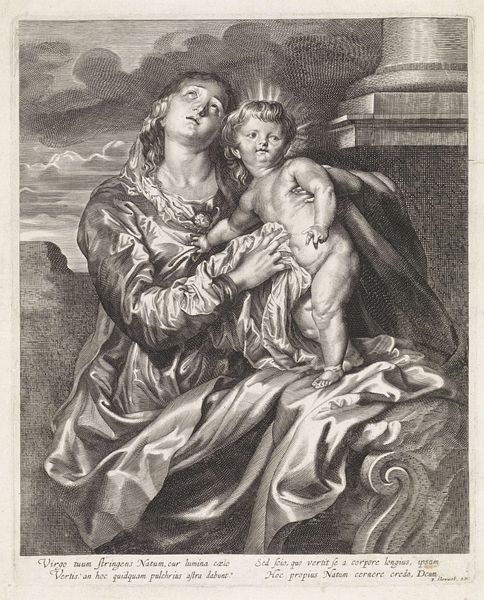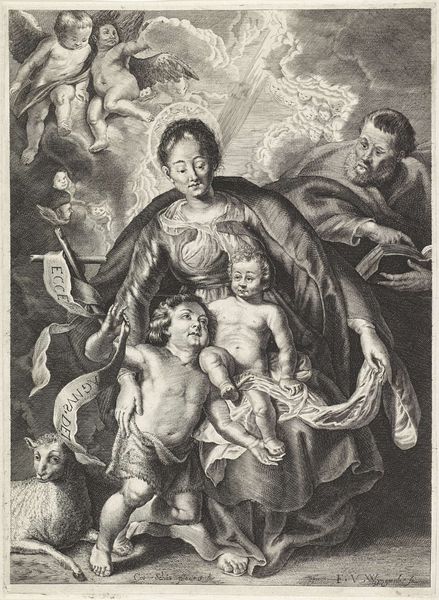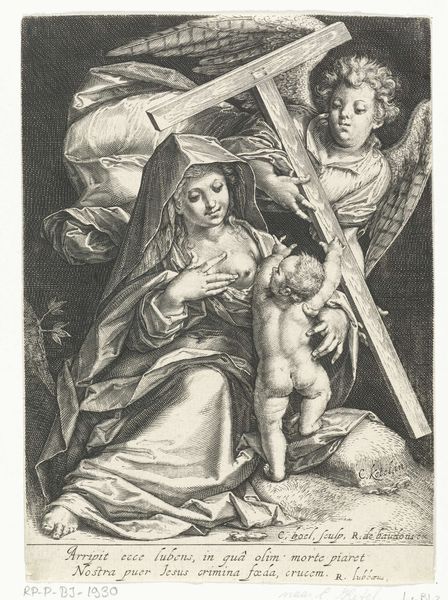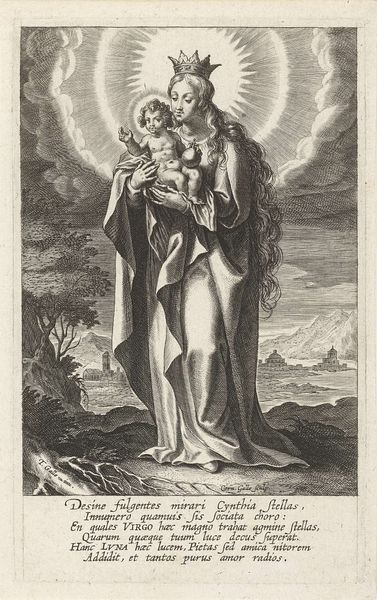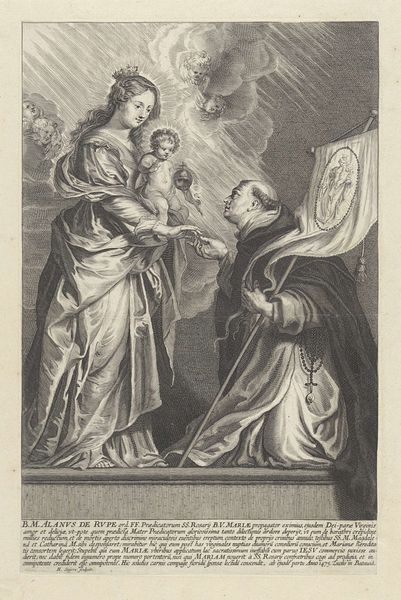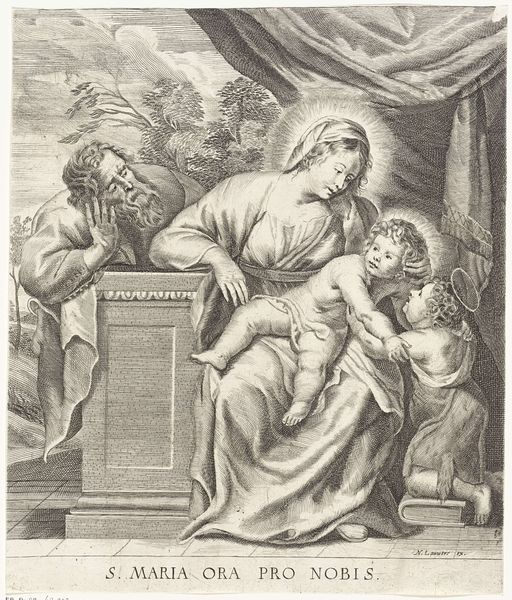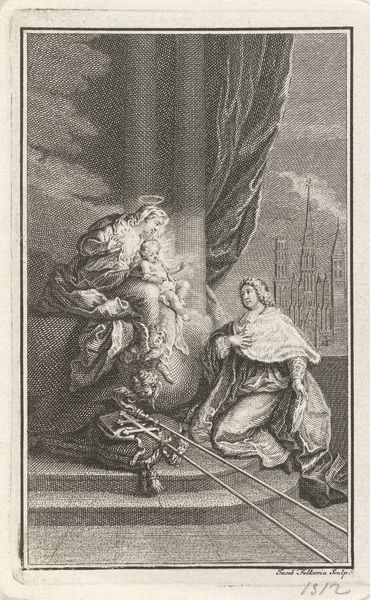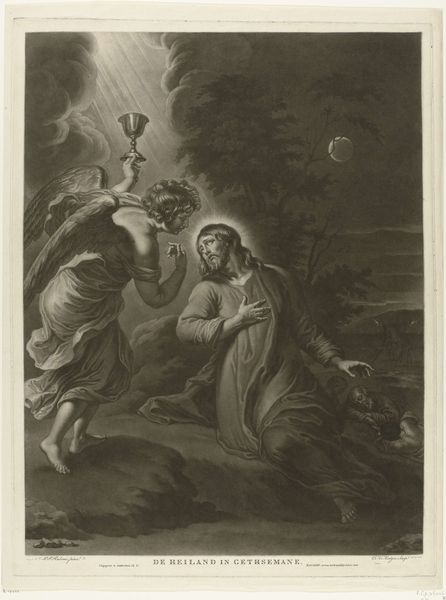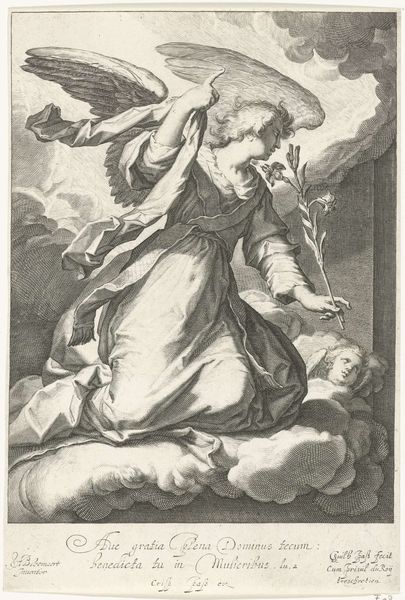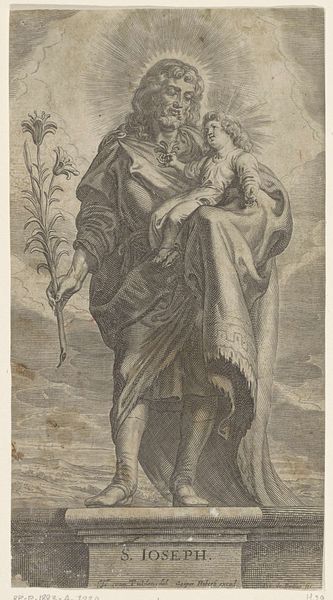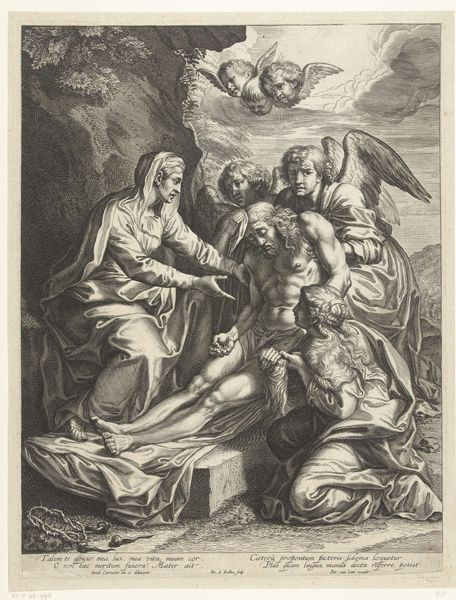
print, engraving
#
portrait
#
allegory
#
baroque
# print
#
history-painting
#
engraving
Dimensions: height 217 mm, width 150 mm
Copyright: Rijks Museum: Open Domain
Curator: Before us, we have "De boetvaardige Maria Magdalena," or "The Repentant Mary Magdalene," an engraving attributed to Pieter de Jode I, created sometime between 1590 and 1632. It’s currently held here at the Rijksmuseum. Editor: It strikes me as a somewhat saccharine scene. The high contrast creates drama, sure, but the abundance of religious iconography and those chubby cherubs…it feels overwrought. Curator: The engraving itself presents a complex process of material exchange and knowledge dissemination. The artist, de Jode, wasn’t creating ex nihilo, but working within a well-established market for prints. This piece likely reproduced an existing painting, making the image accessible to a wider audience and participating in the evolving socio-economic function of art at that time. Editor: But focus on the composition. Note how Mary Magdalene’s gaze directs the viewer's eye upward toward the heavens where you can see three additional angelic figures. The cross, which appears to be balanced against the putti to the right of the artwork, divides the heavenly from the terrestrial. This directional arrangement clearly signals a path to spiritual redemption, visually speaking. Curator: Indeed, and what of the materials involved in producing this print? The quality of the paper, the skill of the engraver to manipulate metal – these elements contribute significantly to the dissemination of Counter-Reformation ideals. Consider the labor involved in each stage of its creation and distribution and also of course, it’s subsequent reception. Editor: However, such considerations neglect the artistic skill apparent in this piece, for instance, notice how de Jode renders the textures. He distinguishes Magdalene's delicate skin, the roughhewn wooden cross, the soft curls of the cherubs’ hair, using just lines and tonal variations. Curator: Fair point, yet I can’t separate this from the social dimensions, you know. Editor: And I can’t ignore the formal choices—the aesthetic elements—that make this piece legible and powerful. Curator: A meeting of heaven and earth perhaps, of labour and design!
Comments
No comments
Be the first to comment and join the conversation on the ultimate creative platform.
